What is in the box? That is the question. Sometimes, it is cuddly cat, other times an empty box, or maybe it is a dead cat. What do you think is in the box? What is your hypothesis?
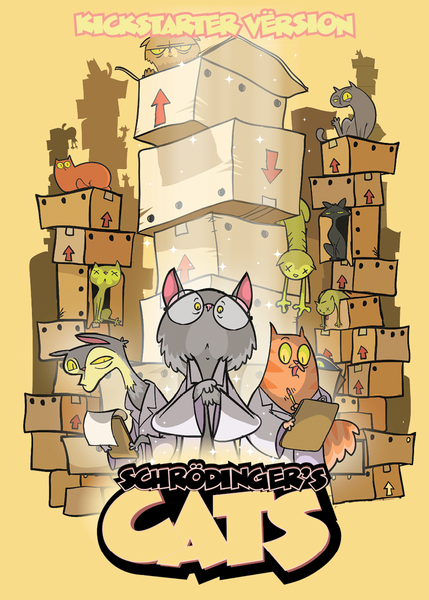
| Schrödinger's Cats (2015) | |||||
| Designer(s) | Heather O'Neill, Christopher O'Neill, Heather Wilson | Artist(s) | James Stowe | Publisher |
9th Level Games |
| 2-6 | 8+ | 10-30m | |||
Cats love boxes, that is a fact. Often, you will see them walking around an empty shipping box with that curious look on their face. It is mere seconds before a cat finds their way into the box, but other times, especially when other cats are nearby, they will spend minutes looking, pondering about what is in the box.
Schrödinger's Cats is a game that imagines your cats as Physicists curious about the nature of the universe (or just a cardboard box). This whole process of pacing around the box, occasionally pushing it before jumping back suddenly...this is all part of the scientific method. While the scientific method may be complex, this game is not.
Simply put, this game is a bluffing game where you are trying to trick the other players into making an incorrect hypothesis (guess) about how many of a certain type of card is in play within their collective hands. At some point, the hypothesis may become too far fetched, and someone will to call out their fellow physicist. This is when the claws come out. The game will be played over a number of rounds until only one Cat Physicist remains.
Box and Components
The game components are pretty straight forward since this is a card game. There will be box cards, cat Physicist cards, hypothesis tracker, and small token for the hypothesis track; the box is well sized for this game. Too often I see boxes with too much open space that don't allow for the cards to stay together well and you end up with different types of cards mixed together requiring sorting before play.
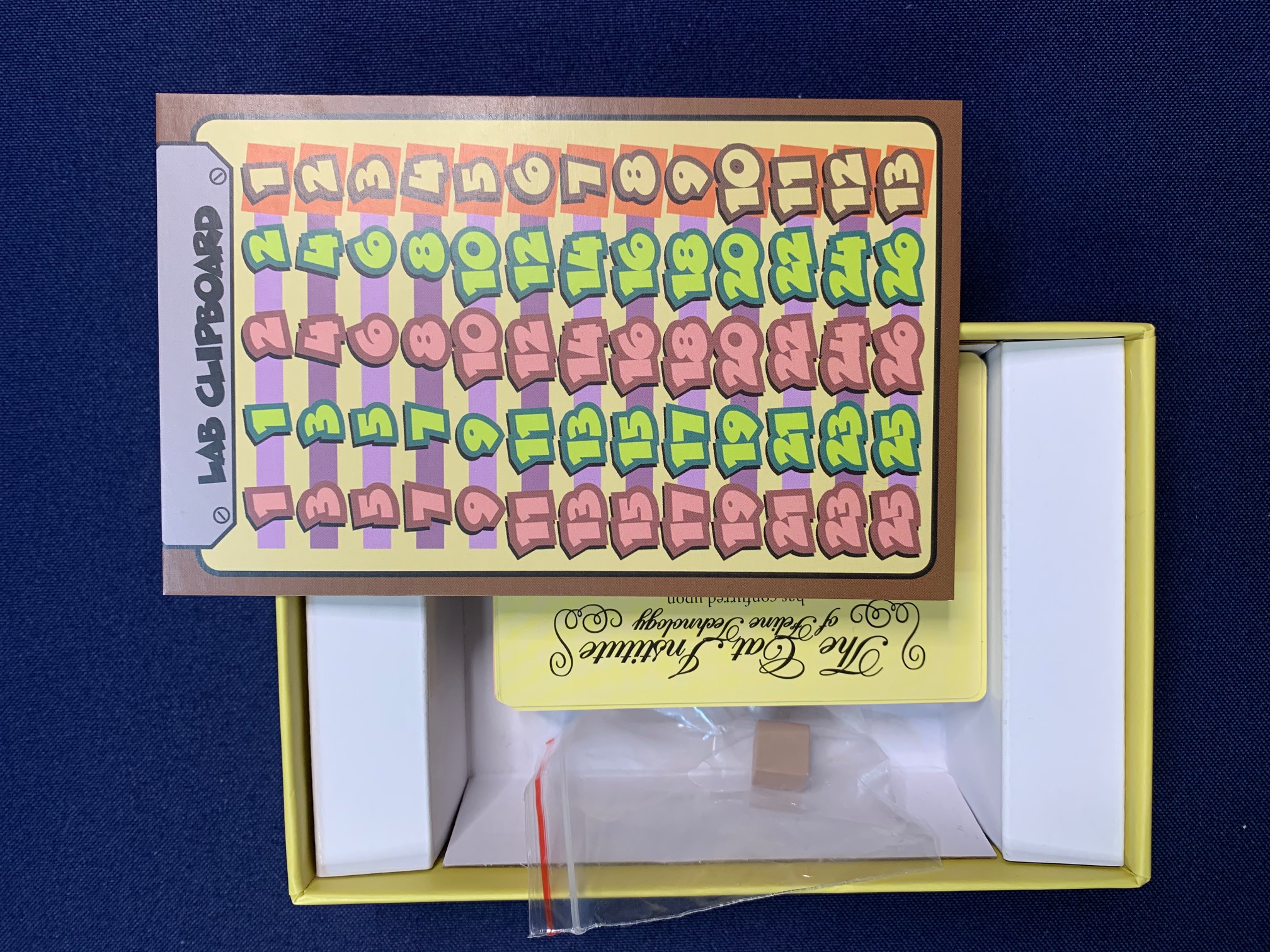
The cat cards come in 4 varieties, and the artwork is cute (well, except for the sad, dead cats). These will be the only types of cards in your hand throughout the game.
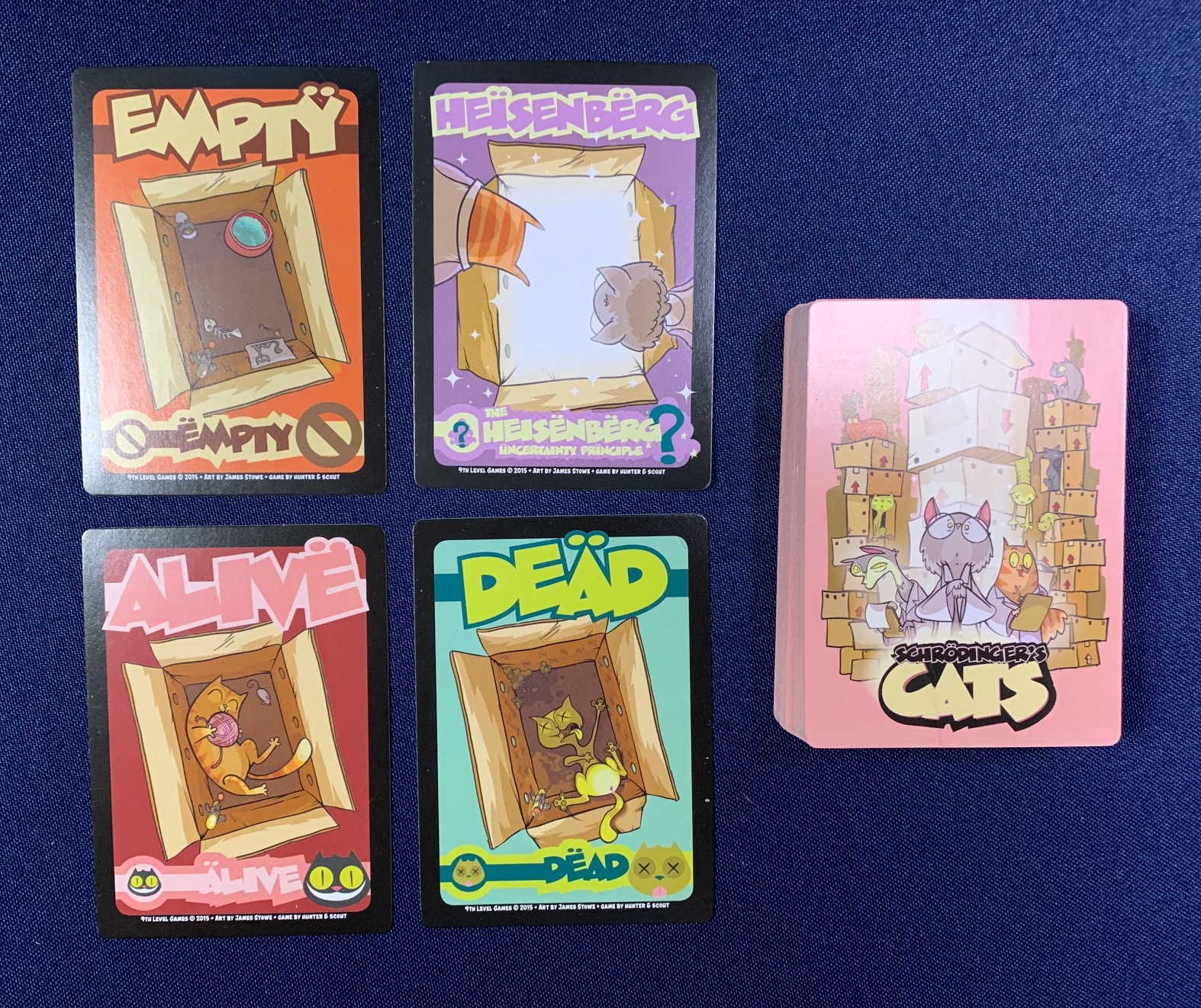
The real cuteness and cleverness of the game come from the cat Physicist Cards. Each cat physicist is based on actual scientist; the Cat Physicist cards include Neil Degrasse Tabby, Stephen Pawking, Albert Felinestein, Sir Isaac Mewton, and more. I especially like the back of the cards that are basically degrees signed by the creators.
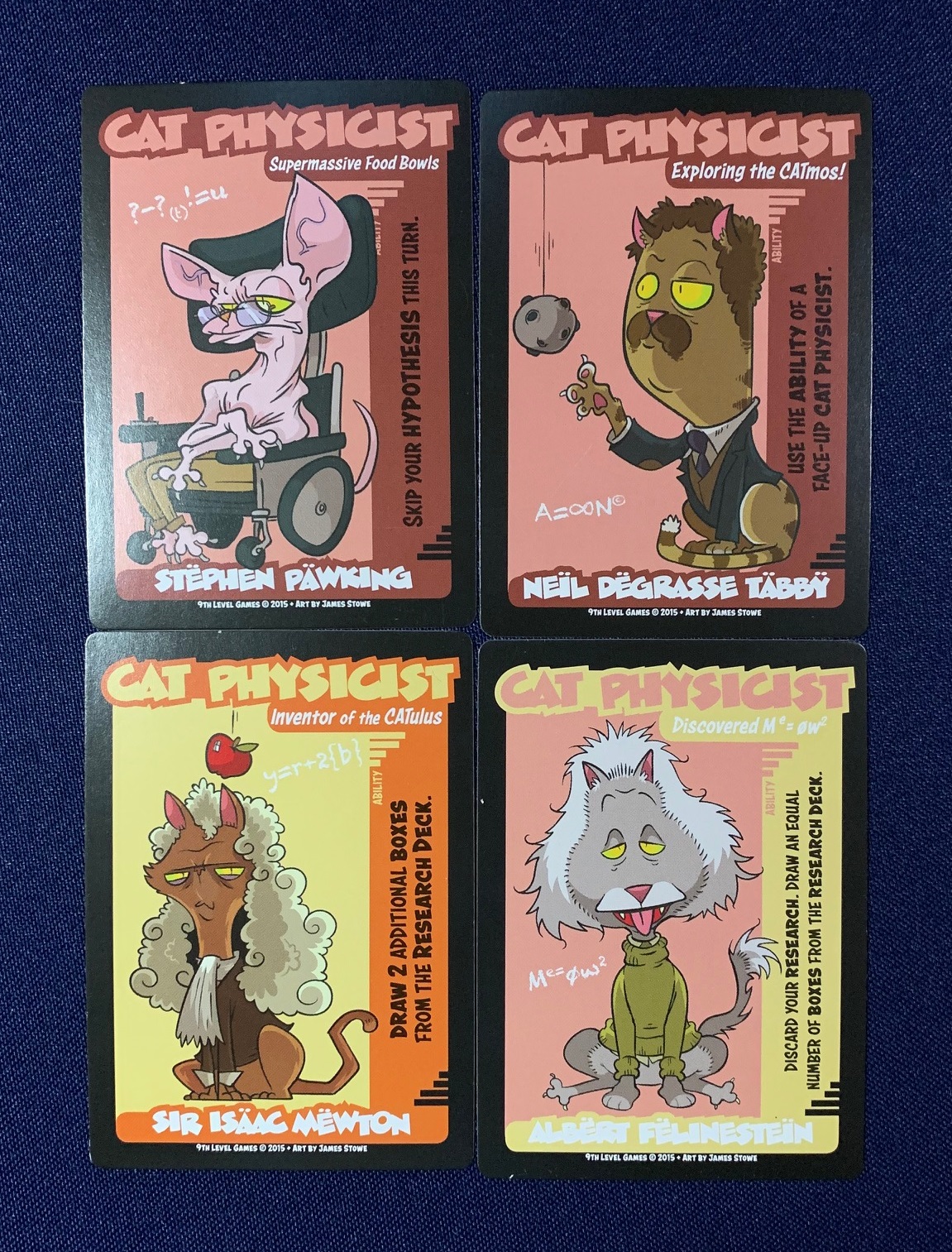
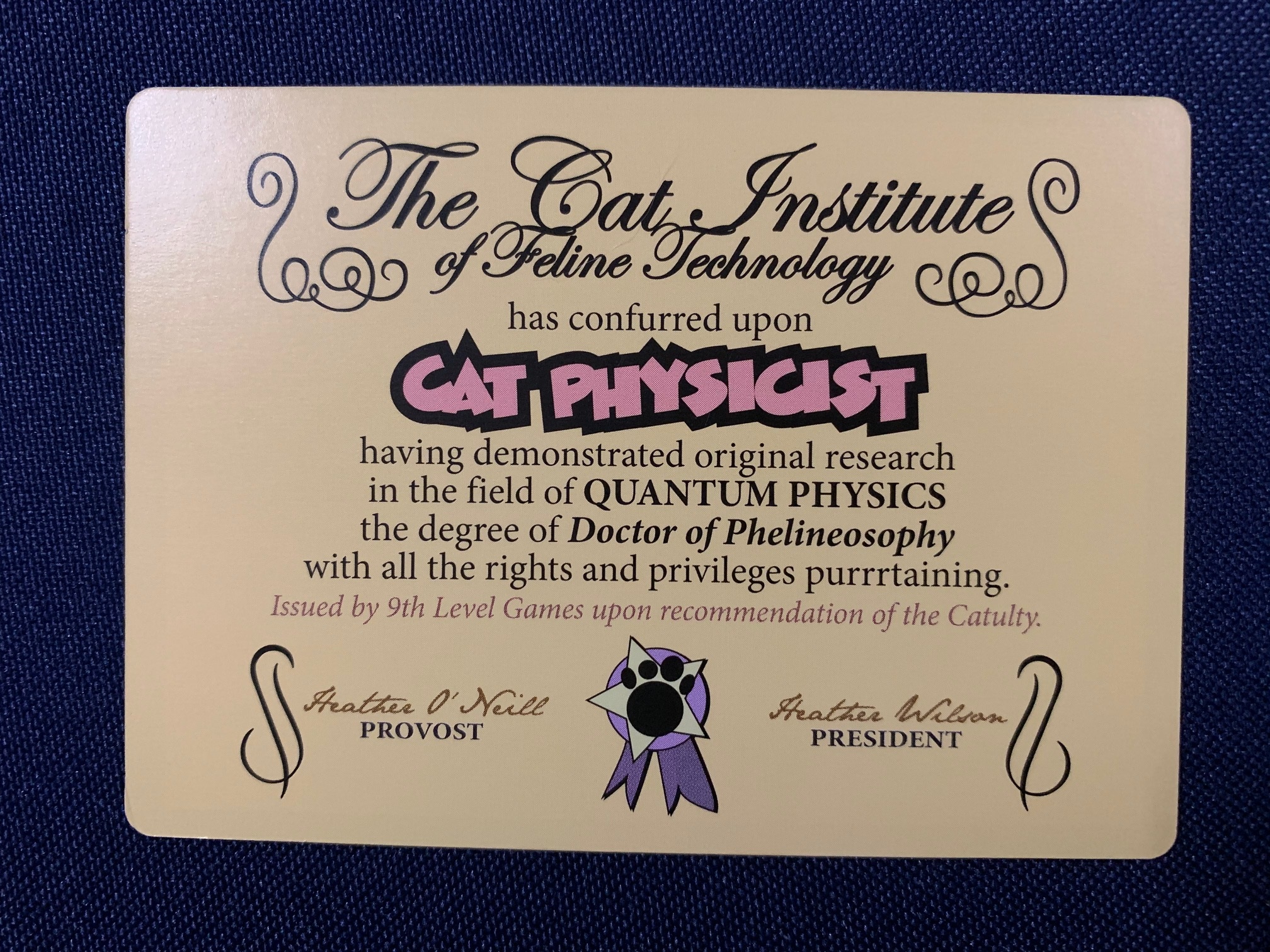
The only slight negative comment I can make about this game is the manual. The manual is fairly well laid out and includes all of the rules needed to play the game. However, they opted for some cute fonts for certain key works in the manual such as Alive Cat, Dead Cat, Empty Box, Hypothesis, and others. When I was first learning this game, those fonts made it a little hard to read just because it happened during every occurrence of those terms. Beyond that, once you know the game, you will rarely need to refer to the manual beyond a quick refresher. Again, the content is all there so that is the most important part of the rules.
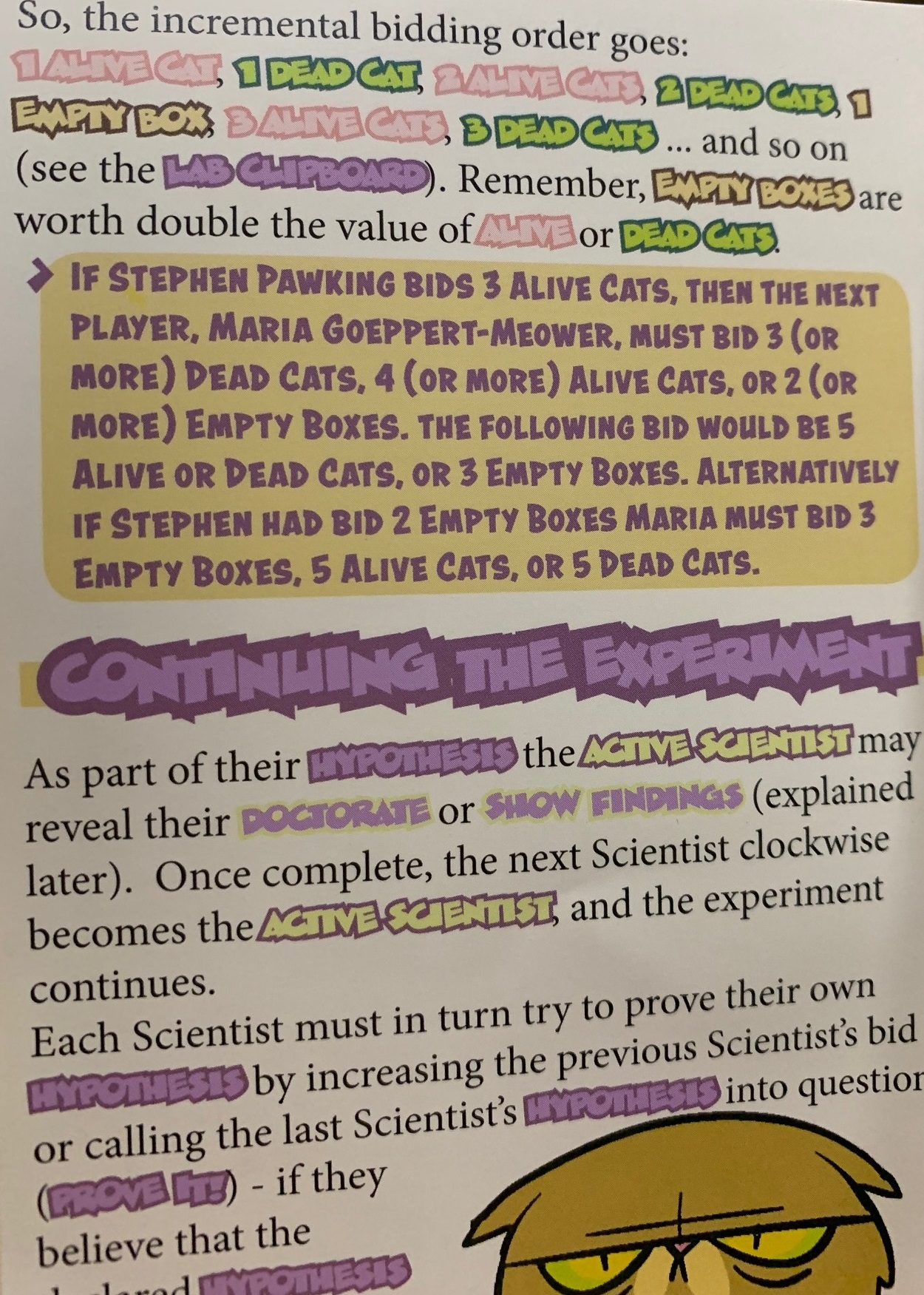
Mechanics
The core idea of the game is pretty straightforward; it is a bluffing gaming where you are trying to make a reasonable hypothesis about how many of a specific cat card are in everyone's collective hands without sounding too unbelievable; otherwise, you may be called out for your claims.
Everyone will be dealt a hand of box cards equal to the number of players that round. Each player will also receive a cat physicist card that will give them a one time a game ability; these are pretty straight forward once you understand the game.
Players will take turns performing one of the following actions:
Propose a Hypothesis
You must state your hypothesis about how many of a specific cat cards you believe there is among everyone's hands and in front of players. You will say something like, I believe there are 2 Alive Cats. You will take the cube on the hypothesis track and slide it to the red 2. However, your hypothesis must always be greater than the current hypothesis in play. Meaning, the next player must state a hypothesis of 2 or more dead cats, 1 or more empty boxes, or 3 or more alive cats. The track wraps around as you go right off the side of empty boxes track.
Note: Heisenberg uncertainty principles cards count as whatever is the current hypothesis regardless of whose stated the hypothesis or owns the cards; it is basically always wild.
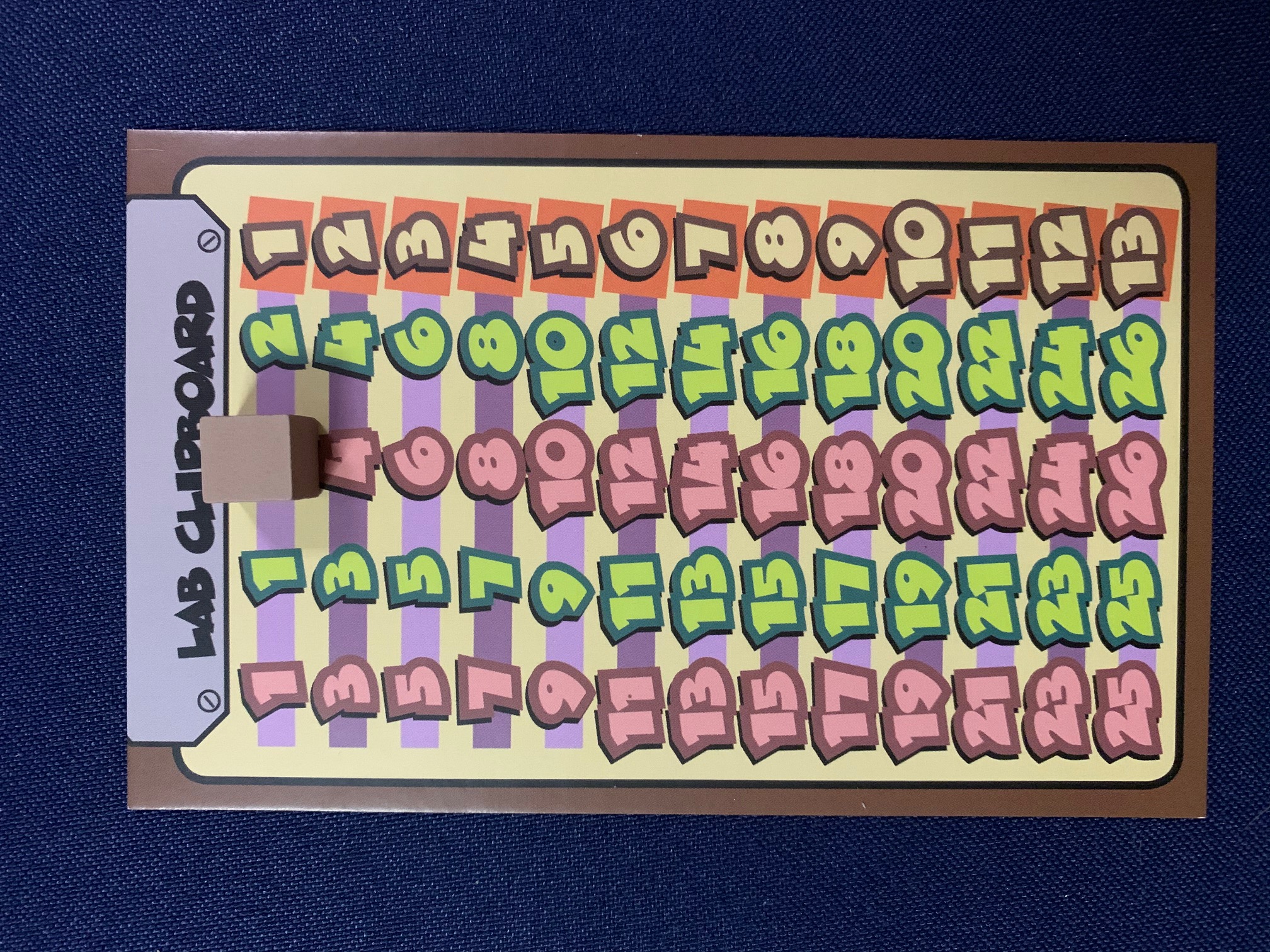
In addition to this action, you have two optional actions you may take after a Proposing a Hypothesis (choose one).
Show Findings
After stating your Hypothesis, you may reveal any number of cards from your hand that support the box type in your hypothesis; these cards will remain in front of you face up for the rest of the game. This information will help others count cards essentially reducing your ability to bluff about what you have. However, after revealing these cards, you may discard up to that many cards from your hand and draw that many from the deck; this may be useful when you really want a couple extra cards of a certain type. Also, if used correctly, it can be a wonderful bluff tactic. I have actually shown a single finding and not discarded to just keep the other wondering why I just did that.
Use Your Doctorate in Cat Physics
Each player has exactly one Doctorate in Cat Physics cards that can be used only once during the entire game. These are very powerful cards that can upset a round such as forcing all face up evidence of a certain type (e.g. Alive Cat) and reducing the number of cards that round. If timed correctly, you can ruin someone's hypothesis if enough cards are discarded.
Prove It
Once you believe the active hypothesis is not valid, you may demand that player prove their hypothesis is correct and all cards are revealed ending the round. If the hypothesis is proven to be not correct (meaning their hypothesis is higher than the number cards of that type in play), then that player is out of the game. However, if the hypothesis is correct and there is at least as much of the matching card in play, then the player who called Prove It is out of the game.
Next Round
After a player is knocked out of the game, the remaining players will start a new round, and the game will continue in this way until only one player remains. That player is the winner.
Final Thoughts
I really like this game; it is a lot like the game, Liars Dice. The game has a lot of character, is easy enough for most people to quickly learn, and there is a few different strategies players can use to fool the others. The game is a great filler game, and even when players are knocked out of the game, it doesn't take long for the game to end because the rounds get shorter as each player is removed. It is a great game families and gaming groups.
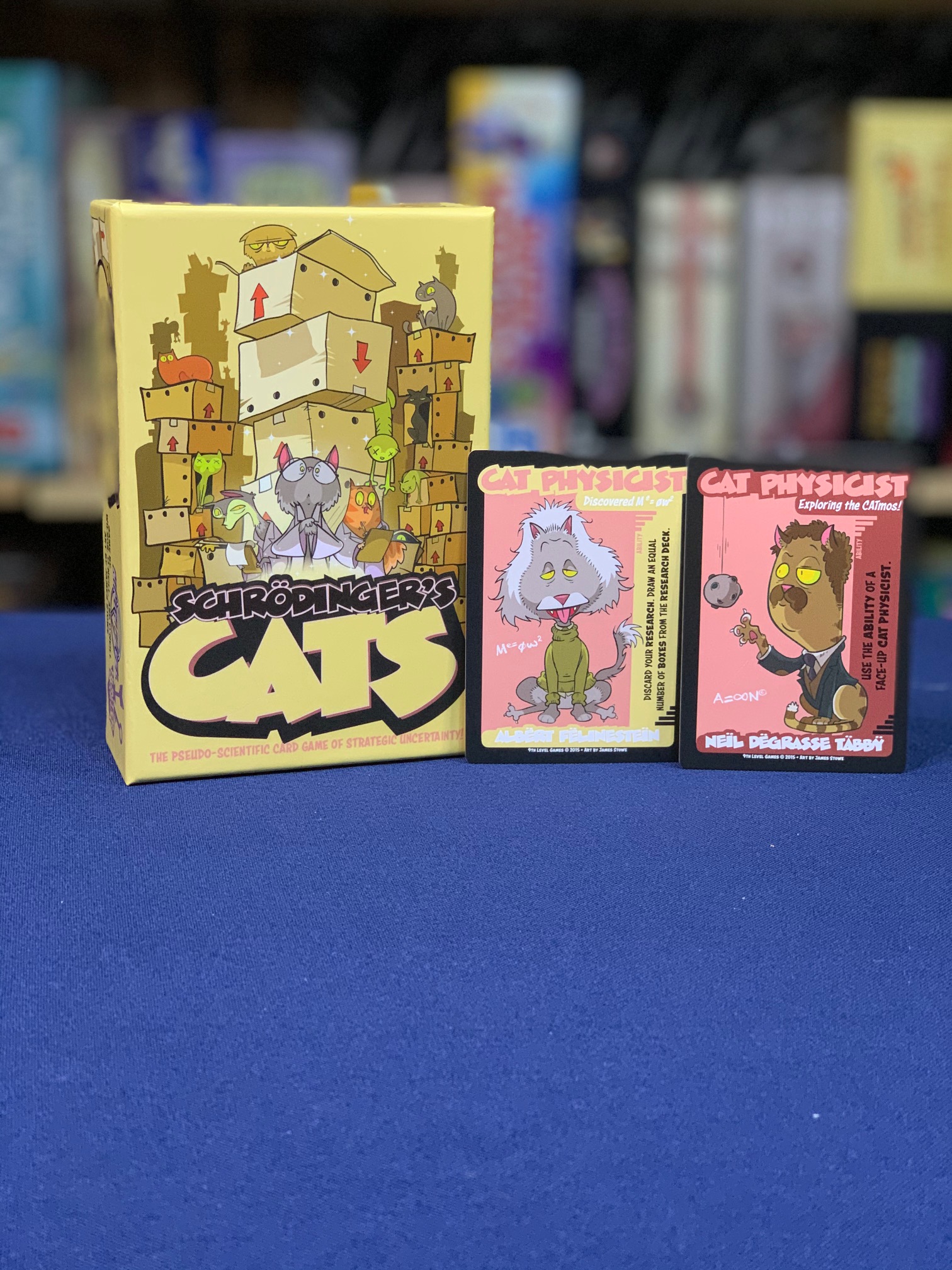
I have played other games from 9th Level Games and see a lot of similar art work, which is really cute. They have another scientific themed game coming out later in 2020 called Pavlov's Dogs, which I am really looking forward to as well. I really enjoy this game and highly recommend it to anyone who likes light weight games that can be tossed into a bag for a quick filler or just played in under 20 minutes.
